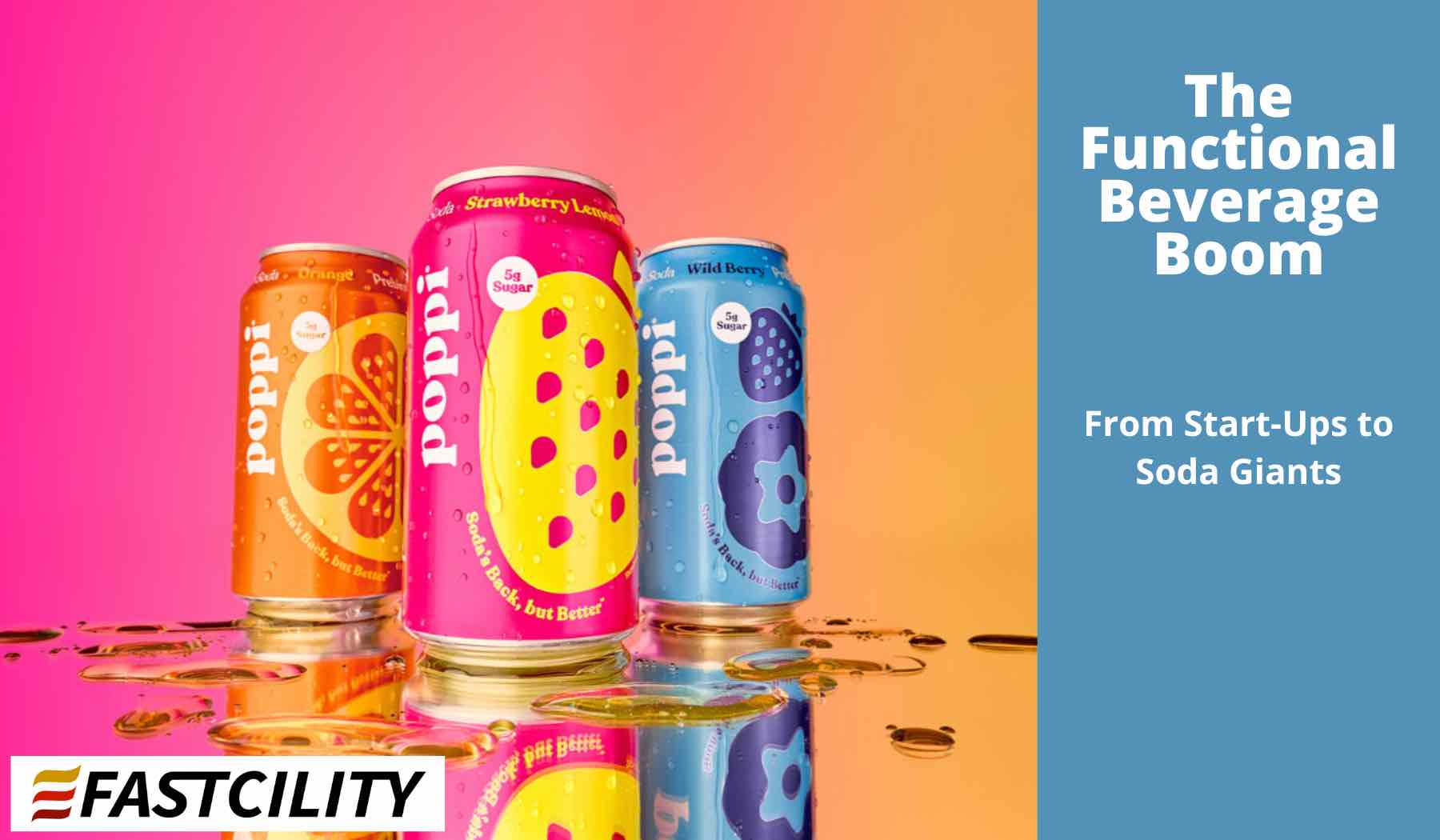How Poppi’s viral rise and PepsiCo’s push into prebiotic colas signal a new era where wellness, flavor, and functionality converge in every can
The beverage industry has always been quick to evolve with consumer tastes, but few shifts have felt as pronounced—or as fast-moving—as the current boom in functional drinks. What started as a niche for kombucha brewers and wellness tonics has now become one of the most hotly contested categories in food and beverage.
From multinational corporations like PepsiCo launching prebiotic colas, to start-ups riding viral TikTok campaigns, functional beverages are no longer fringe—they’re shaping the mainstream.
What Do We Mean by “Functional”?
Functional beverages go beyond taste and refreshment. They are positioned to deliver specific benefits: gut health, focus, energy, hydration, or even stress relief. Think prebiotics, probiotics, adaptogens, nootropics, vitamins, and herbal extracts—all finding their way into cans and bottles across retail shelves.
For today’s consumer, especially younger demographics, a soda that tastes good isn’t enough. They want their drink to “do something”—whether that’s aiding digestion after lunch or providing a clean caffeine kick during a workday slump. The result is an expanding category with crossover appeal: equal parts wellness, indulgence, and lifestyle.
PepsiCo Steps Into Prebiotics
One of the clearest signals of just how big this space has become is PepsiCo’s entry into the category. Earlier this year, the company rolled out its own prebiotic cola, building on the growing awareness of gut health as a driver of consumer behavior. PepsiCo isn’t just dabbling—they’re investing heavily, buying into the same trend that helped smaller challengers rise so quickly.
This mainstream validation matters. When a brand with Pepsi’s reach throws marketing muscle behind prebiotic sodas, it helps shift consumer perceptions: these aren’t just boutique health drinks anymore, they’re becoming everyday options.
The Poppi Backstory
Of course, PepsiCo’s interest didn’t come out of nowhere. A big part of the story is Poppi, the Texas-based prebiotic soda brand that became a social media sensation. First appearing on Shark Tank, Poppi leveraged bright packaging, clever positioning (“a soda that’s actually good for you”), and relentless influencer campaigns to generate massive buzz. TikTok became its playground, and consumers bought in quickly, making Poppi a billion-dollar brand in just a few years.
But the journey wasn’t without bumps. Poppi faced a lawsuit over some of its health claims—an important reminder that the functional beverage category can’t get by on hype alone. Regulatory scrutiny and consumer expectations around transparency are only getting tighter. Still, PepsiCo’s eventual acquisition of Poppi shows how valuable the brand became, even with growing pains.
AG1 and the Expanding Frontier
While soda alternatives dominate the headlines, functional beverages extend well beyond carbonated cans. AG1 (formerly Athletic Greens) has carved out a loyal following with its all-in-one daily nutrition drink. Meanwhile, brands experimenting with mushroom-based elixirs, adaptogen blends, and AI-personalized formulations are pushing the boundaries of what a “drink” can do.
For operators and retailers, this signals opportunity. Stocking functional drinks is no longer a “nice to have”—it’s becoming a consumer expectation. From coffee shops to convenience stores, customers are looking for options that align with their health goals without sacrificing flavor or convenience.
Why This Matters for the Industry
For manufacturers, functional beverages represent new product lines, higher margins, and a way to stay relevant with health-conscious audiences. For distributors and retailers, it’s about capturing incremental sales and catering to shifting demand. And for the service industry—restaurants, cafés, and bars—it’s about recognizing that consumers increasingly want drinks that are both enjoyable and beneficial.
The lessons here are clear: functional beverages are no longer an experiment. They’re becoming a central part of the future beverage portfolio.


Recent Comments